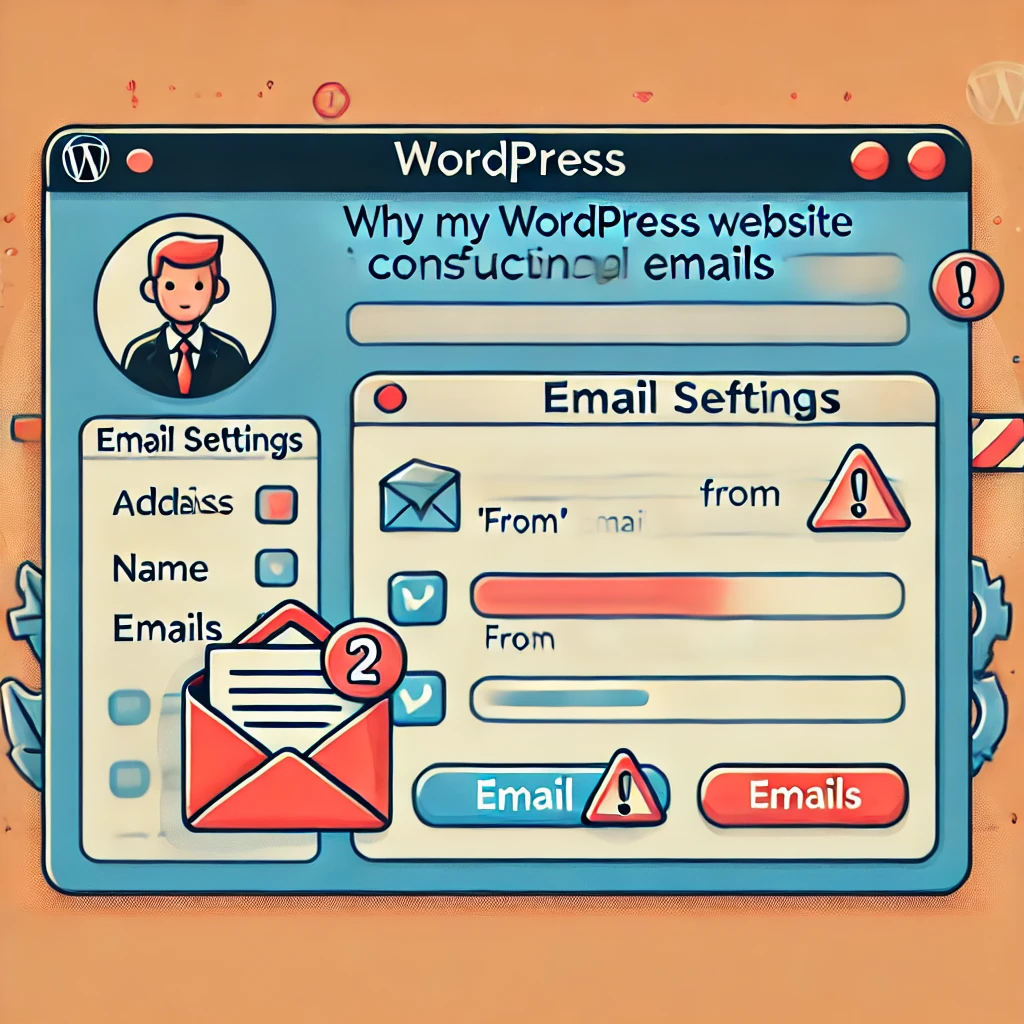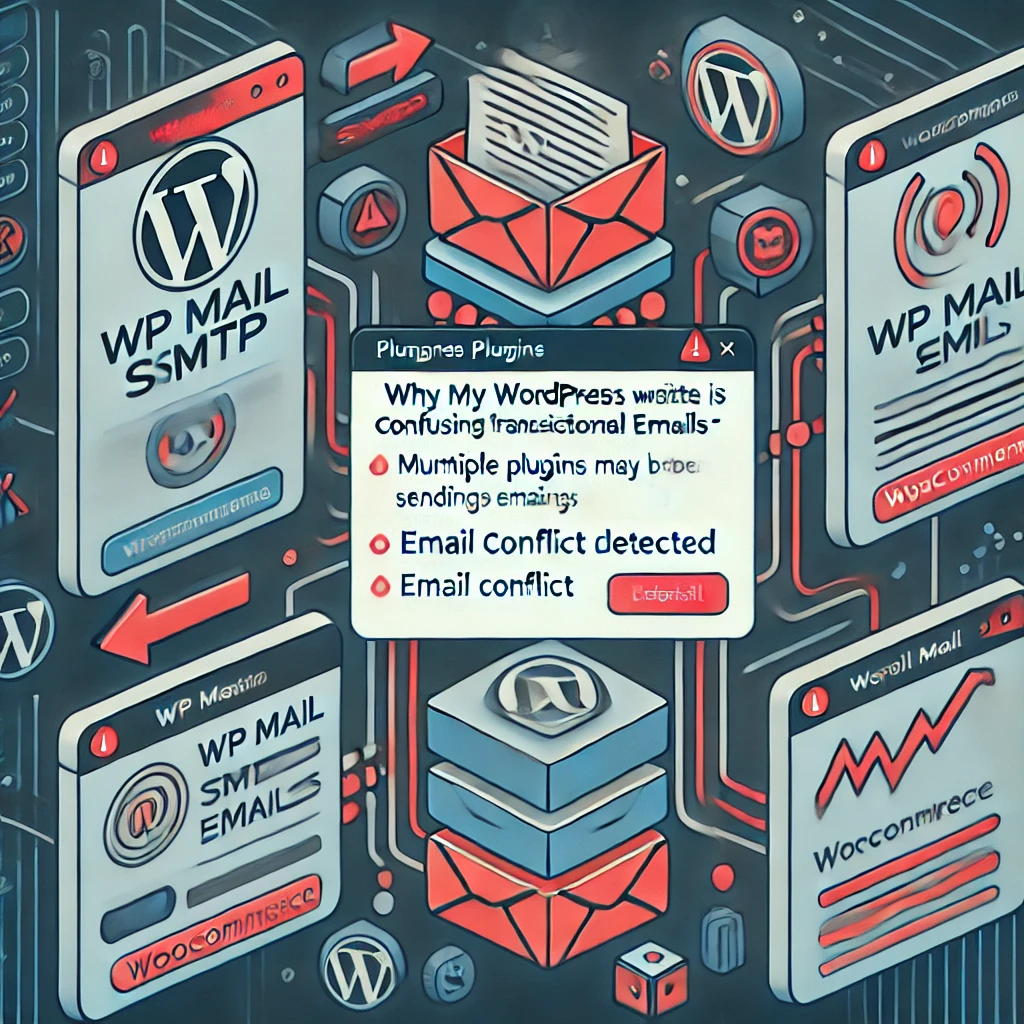If you’ve ever asked yourself, “Why is my WordPress website confusing transactional emails?” — you’re not alone. Transactional emails are an essential part of any website’s functionality, especially for eCommerce sites, membership platforms, and contact-driven businesses. When these emails are misrouted, land in spam, or contain inaccurate content, it creates frustration for both the website owner and the end user.
Understanding why transactional emails behave unpredictably in WordPress requires an exploration of how WordPress handles email delivery, where things commonly break down, and what you can do to fix or improve the situation.

What Are Transactional Emails in WordPress?
Transactional emails are automated messages triggered by user actions. Unlike marketing emails that promote products or services, transactional emails serve a functional purpose. Examples include:
- Order confirmations from WooCommerce
- Password reset instructions
- Account creation or registration notices
- Comment or form submission confirmations
- Shipping notifications
- Booking confirmations
If your WordPress website handles any of these user interactions, it’s responsible for sending emails that help complete the user journey. When these emails are confusing, missing, delayed, or misformatted, it undermines trust in your website.
At Best Website Builder Group, we’ve resolved hundreds of email misconfiguration issues for WordPress users who didn’t even realize their site was failing to send proper transactional messages.

Why Transactional Emails Go Wrong in WordPress
The most common reason why a WordPress website confuses transactional emails is poor configuration. Out of the box, WordPress uses the wp_mail() function, which depends on the hosting server’s built-in PHP mail function. This system works inconsistently and is notorious for delivery issues.
Here are some key causes:
1. Sending Emails Without SMTP
WordPress core does not configure a dedicated SMTP server by default. Instead, it relies on your hosting provider’s mail function. This often results in:
- Emails going to spam
- Inconsistent formatting
- Failed authentication (DKIM, SPF, DMARC)
- No delivery confirmation or logging
Using a plugin like WP Mail SMTP or Post SMTP allows you to route all WordPress email through a reliable mail server (like Gmail, SendGrid, or Amazon SES), ensuring proper delivery and formatting.
2. Plugin Conflicts
When multiple plugins try to send emails—such as WooCommerce, membership tools, or form builders—they may override each other’s settings. This leads to:
- Duplicate emails
- Mixed sender names or email addresses
- Broken layouts or missing variables
- Different formats between emails
Always test your emails after activating new plugins and ensure they’re using the same sender configuration.
3. Poorly Written Email Templates
Plugins like WooCommerce come with customizable email templates. However, if these templates are edited incorrectly—especially through theme overrides—it can cause placeholder errors like {{ customer_name }} displaying instead of the actual name.
Theme or child theme overrides may also include outdated templates after plugin updates. When someone asks, “Why is my WordPress website confusing transactional emails?”, outdated template files are often the culprit.
4. Incomplete Email Settings
WordPress and most plugins allow you to configure:
- From Name
- From Email Address
- Email Headers (reply-to, CC, BCC)
- Message Body (HTML or plain text)
If these fields are incomplete, the email may be flagged as suspicious or may not send at all. Always configure your site’s email identity clearly and consistently.
5. Server Reputation and IP Blacklisting
If your web host shares IP addresses with other customers (common on shared hosting), your transactional emails may be flagged as spam due to someone else’s abuse. Even if your site is properly configured, delivery issues can persist.
Using a dedicated SMTP provider bypasses your web host’s limitations entirely.

How to Troubleshoot and Fix Email Confusion in WordPress
Fixing transactional email problems requires methodical diagnosis. Here are best practices to follow:
Use an SMTP Plugin
Install and configure a plugin like WP Mail SMTP to connect your site with a verified email service. Services like:
- Gmail (via Google Workspace)
- SendGrid
- Mailgun
- Amazon SES
- SMTP2GO
…will dramatically improve deliverability and consistency. These platforms allow authenticated sending and reputation management.
Send Test Emails
After SMTP setup, send a test message to verify the connection. Most SMTP plugins include a test email feature that checks for server errors or authentication problems.
Enable Logging
Install plugins like Email Log or use built-in logs provided by SMTP tools to track every email sent from WordPress. This helps confirm whether the issue lies in delivery or message content.
Standardize Email Templates
If using WooCommerce or custom plugins, review your email templates. Make sure they:
- Use consistent branding and format
- Replace variables like
{{order_id}}with proper data - Include clear subject lines and headings
- Are mobile-responsive and easy to scan
If your templates have been modified in a child theme, test reverting to the original to see if that resolves the confusion.
Verify Domain Settings
Proper email delivery also depends on DNS records. Make sure your domain includes:
- SPF record: Specifies who is allowed to send mail on behalf of your domain.
- DKIM record: Provides cryptographic verification of the message.
- DMARC record: Helps prevent spoofing and phishing.
Tools like MXToolbox or Google Postmaster Tools can help you evaluate your domain’s email configuration and reputation.
Avoid Using “noreply@” Emails
Emails sent from addresses like noreply@yourdomain.com are more likely to be flagged as spam. Use addresses like support@, hello@, or orders@ to encourage interaction and improve trust.

When Your Transactional Emails Are Confusing Users
Even when emails are delivered, they can still confuse recipients. Common issues include:
- Subject lines that don’t match the action (e.g., “Thank You for Registering” when they placed an order)
- Emails missing critical information (order number, login link, contact details)
- Layout issues (especially in Outlook or Gmail apps)
- Mismatched branding or inconsistent tone
These issues are typically caused by poorly managed templates or overlapping plugin messaging. Each email should have a specific function, purpose, and visual consistency with your website.
At Best Website Builder Group, we offer tailored solutions to rewrite and standardize all transactional email templates across your WordPress platform—ensuring a unified customer experience from start to finish.

How WooCommerce Complicates the Process
If you run an eCommerce store, WooCommerce is likely responsible for a majority of your site’s transactional emails. While WooCommerce offers good defaults, advanced customizations often require:
- Overriding core templates in your theme
- Using hooks like
woocommerce_email_headerorwoocommerce_email_footer - Testing each template after plugin updates
- Coordinating emails with CRM or fulfillment platforms
Poorly managed changes here can create massive confusion. Customers might receive outdated information, wrong branding, or even duplicate receipts.
For stores sending thousands of emails per month, the combination of SMTP, logging, template control, and domain authentication is essential.

Why Email Clarity Impacts Your Business
Every transactional email is a touchpoint between your brand and your customer. If these emails are unclear, inconsistent, or unreliable, it undermines trust—even if your product or service is excellent.
Email confusion can lead to:
- Support tickets from users who didn’t get their receipt or login info
- Missed opportunities for upsells or cross-sells
- Customer complaints due to lack of confirmation
- Damage to your sender reputation or deliverability
Taking control of your email system is one of the highest-ROI technical improvements you can make to a WordPress site.

Conclusion
If you’ve been wondering why your WordPress website is confusing transactional emails, the answer almost always lies in poor configuration or lack of standardization. Fortunately, WordPress is flexible, and the tools to solve these issues are well-supported and widely used.
From SMTP routing to domain authentication and email template clarity, each layer of your email system contributes to the customer’s experience—and to your brand’s reputation.
If you need help setting up transactional email systems the right way, or you want to ensure your WordPress site communicates clearly with every customer, the Best Website Builder Group has the experience, tools, and proven frameworks to help you do it right the first time.
